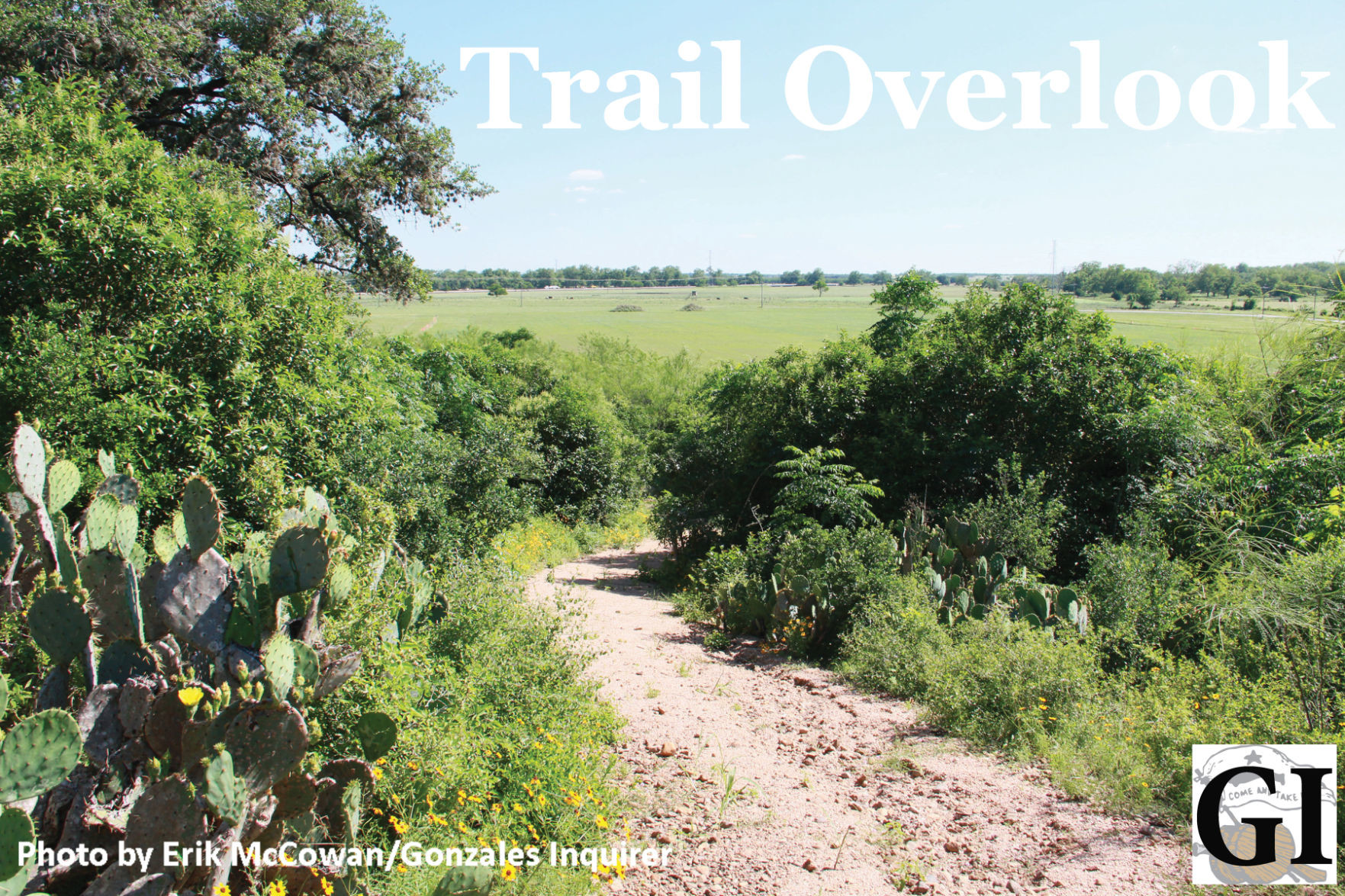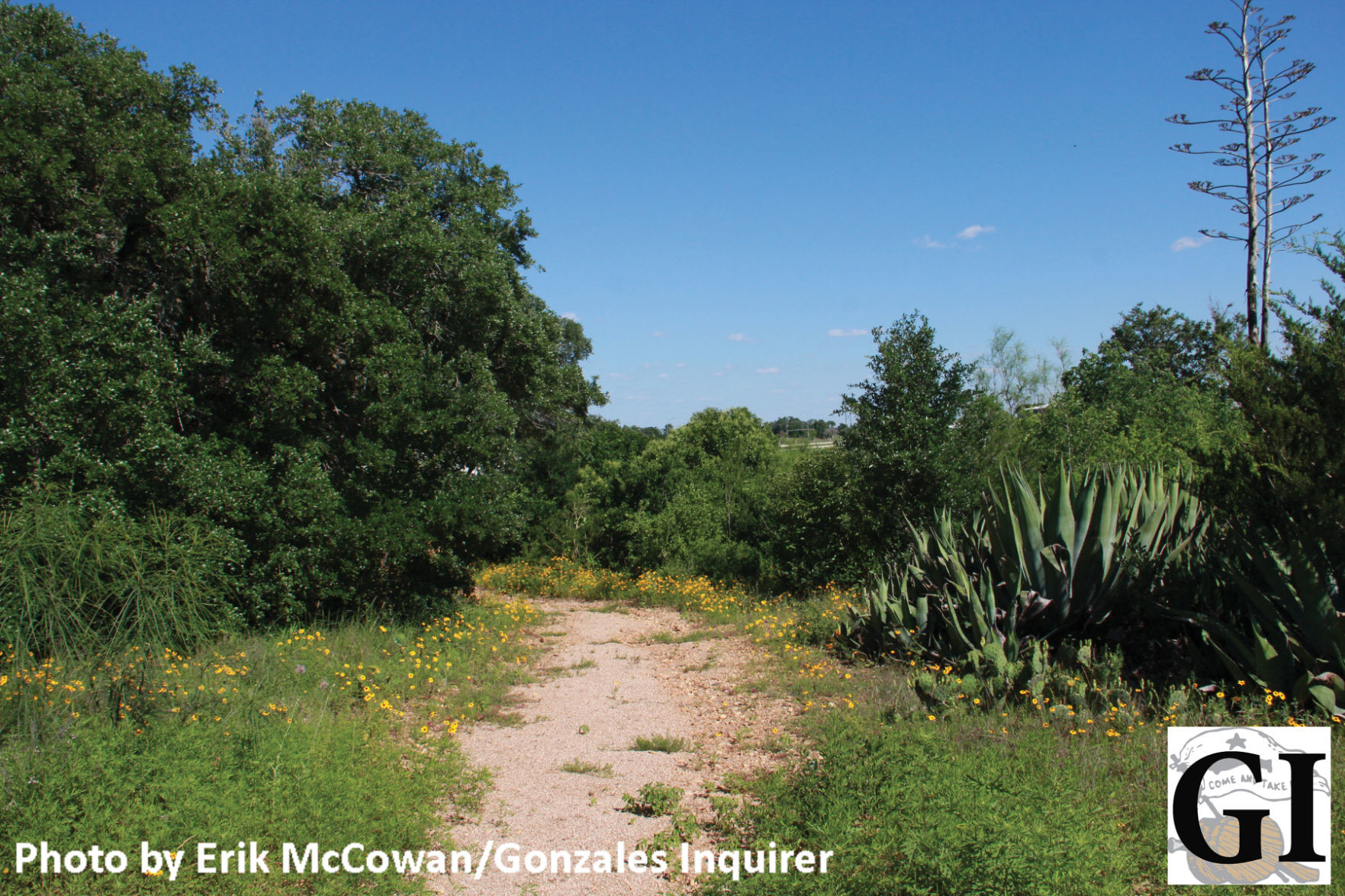What makes a park?
GONZALES — Central Park, Zilker Park, South Park, Linkin Park, Lions Park, Jurassic Park, pocket park, bark park…what exactly is it that defines a park ?
Merriam-Webster defines a park as “a piece of public land in or near a city that is kept free of houses and other buildings and can be used for pleasure and exercise.” Last Tuesday, a big city television station attempted to get to the bottom of this simple definition and wound up here.
San Antonio news station KENS 5 sent their “I-Team”—the “I” presumably referring to investigation—to town earlier this week to see whether or not J.B. Wells Park is really a park. It appears that the visit was in response to a request by JoAnn Leifeste on the legalities of placing the new city expo center there. Leifeste’s earlier attempt to have Texas Attorney General Ken Paxton veto the funding for the park were not successful.
Regardless of your opinion of the soon-to-be built center, it’s hard to argue that the 302 acres just across the river isn’t a park.
“To me, it’s a wonderful park,” said Anne Dollery, who serves as the arena operations manager out at J.B. Wells. She helps families, businesses and organizations book the facilities and notes that the main rodeo arena is reserved until November.
“It’s a showcase for Gonzales. People love to come to Gonzales for this,” she said.
In the KENS 5 report, reporter Barry Davis implied that rodeos are all that show up to the facilities, somehow denying the area of its park-like status. But Dollery was quick to tick off a myriad of events that occur at the park year-round.
Yes, there are barrel races and play days but any rodeo event is offset by circuses, monster truck shows, Relay For Life, the GoTexan Steak Night scholarship event, Warrior’s Weekend barbecue and reception and the Gonzales Livestock Show, just to name a few. Perhaps Davis could not comprehend that small towns use parks in different ways than big cities do.
Leifeste mentioned in her interview that as part of the will that bequeathed the land of rancher J.B. Wells to the city, he was adamant that the land be used as a park. If not, the city had to sell the land.
Maybe it’s because there isn’t a playscape gracing the grounds yet — which to some is a definition of a park. But, alas, one is on its way.
In a conversation with City Manager Allen Barnes, a roadmap was unveiled on the current happenings of the park. Sure, the expo center is coming along—which is most likely the impetus for Leifeste’s consternation—but he described the many things that go on there on a weekly basis and how that, in fact, a playscape will be installed.
“It’s been the plan all along,” said Barnes. “It’s taken a long time for J.B. Wells to become what it is, and it’s going to take a while for us to get it where we think it should be.”
Anytime a large tract of land is gifted to a municipality for use as a park, master plans and money has to be generated. The same scenario is playing out up in Georgetown right now as resident Jack Garey has donated 525 prime acres to be used as a new city park—the largest in the area. In Georgetown it will only take three years to put in the planned equestrian center, dog parks and amphitheater that are in the plan because he donated $5 million to go along with the $10 million bond that voters approved in 2008 for the park.
Now, Gonzales doesn’t have worries like that, and it’s wise to assume that J.B. Wells himself understood that creating infrastructure takes time.
Perhaps one of the quietest and most natural spots in the city is on top of Santa Anna Mound. Four walking trails converge at the top and a peek over the side looks right down on the new soccer fields that will be ready for play by summer. Native plants like prickly pear, yucca, agave and bountiful live oaks cover the knob.
It is a favorite spot for wild hogs—as evident from the trap that was set—and white-tail deer leap about. It is unknown if they are from the same family of deer that Wells kept on his ranch as pets, but it is doubtful that he would see anything wrong with this mini refuge.
Barnes sees much value in the scenic spot, even wishing that more residents would use it. In his travels as city manager, he has found all kinds of parks that have been created by cities. Some are open prairies while others are small pocket parks with a single basketball goal and benches.
“A park is, in my opinion, a place designated for recreation that the public has access to, that they can come and go, they can do what they want to do,” he said. “A park is a park is a park. I mean, there are all kinds of parks.”
If a park is judged perhaps by the age of its participants, Dollery says that J.B. Wells has that covered, too. For the state junior high rodeo finals, she described how families come out for the weekend and set up camp. Some bring grills and small water pools and water slides while the bigger kids hit the volleyball nets or wander down to the Guadalupe River for a dip.
“To me, this is what a park is.” Dollery said.
Leifeste, who is a former pastor, says that the city needs to sell the land and donate the money to the Austin Seminary, which is what the will stipulated if the city’s park plans failed. It is unclear what would fill the park’s void if such were to happen. In the meantime, she is searching for an attorney who will agree to take up her cause.
Sometimes parks are easy to see with slides and swings shining bright. Newfangled parks offer water features and splash pads. More wide-open parks allow residents to use their imagination to create their ideal space, not needing material implements to lead their way. Maybe that’s what the pastor needs, a little imagination to see J.B. Wells Park for the jewel that it is.
“Maybe she should come out and look at the families out here,” Dollery said.
Comments












